Holiday 1969 Mobile Home
There have been dozens of unique vintage mobile homes over the years, some more awesome than others. In this article, we take a look at vintage mobile homes that were ahead of their time.
Understanding Trailer Shows
Trailer shows were popular events all over the nation. Movie stars and performers entertained attendees while builders showed off their latest innovations and concept designs. The more elaborate or unique the better.

A few of the mobile homes you'll see below were concepts that were only shown at a trailer show and never became available to the general public. Trailer shows were big events back in the day and competition was tough. Builders would bring their best sellers and their concept homes for everyone to see.
These trailer shows were notorious and a vital part of the industry. Companies would show off their best models and many would have a concept model or two on display to gauge interest. If dealers were interested in a concept the factories would make a short run or two to see how the market reacted. Dealers chose what they would carry on their lot based on trailer show interest.
Learn more about trailer shows here.
Aerocar by Glenn Curtiss
Glenn Curtiss was nothing short of an aeronautical and engineering genius, especially with hard-body trailer coaches. He was way before his time.
In 1921 there were no trailers being mass-produced on an assembly line, yet Glenn Curtiss and his half brother managed to build and sell "over 100 Motobungalo vehicles between 1921 and 1922." (David Leroy Harmon, Pg 133)
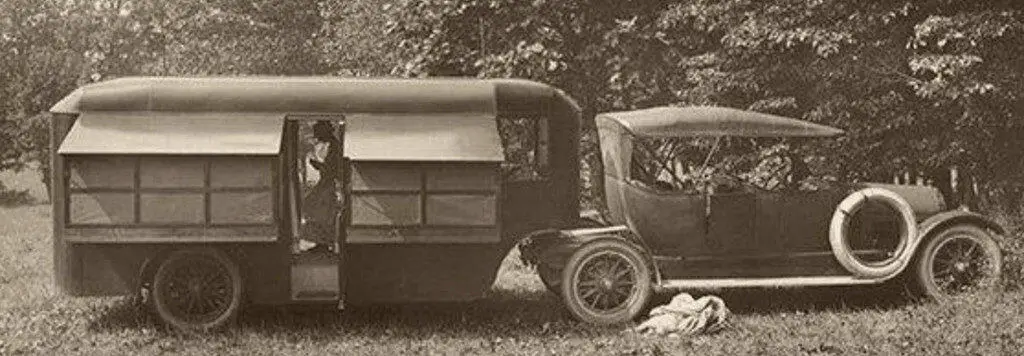
In 1926, Curtiss started producing the much-improved Aerocar in Florida. He had borrowed even more design ideas from airplanes and tinkered with trailer designs to decrease wind resistance. In addition, he styled the Aerocars to fit the buyer's needs. Some buyers used the trailer as a mobile office, some a delivery vehicle, and some a true mobile home.
The difference between the two models (above and below) show how Mr. Curtiss developed and tinkered over the years.
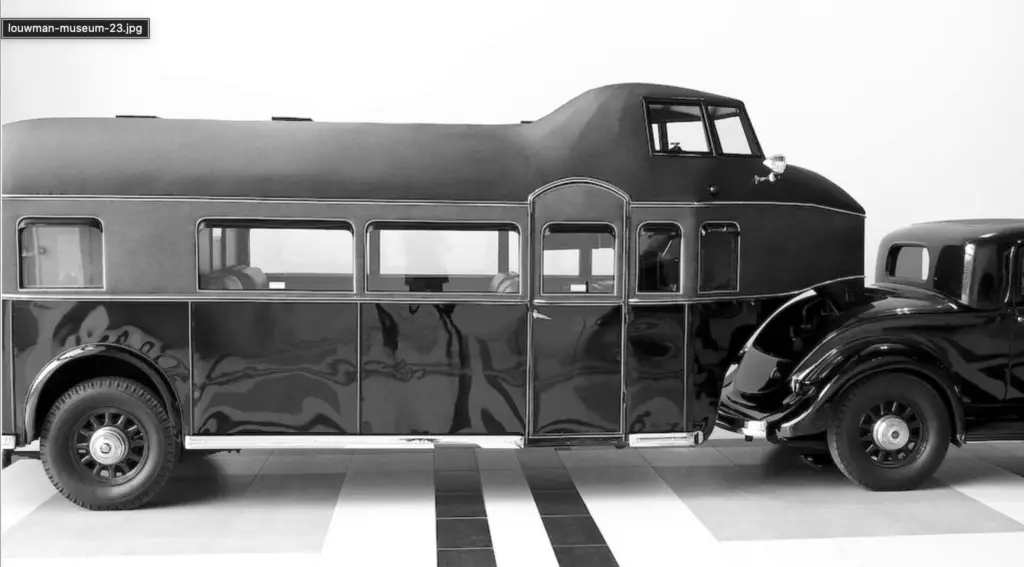
Source: Louwman-museum
Glenn Curtiss seemed to be more interested in commercial and industrial transportation. Delivery trucks designed by Curtiss are traveling pieces of art as are the trailers. You can read about an Aerocar restoration here.
Liberty Trailercoach's Collapsible Mobile Homes
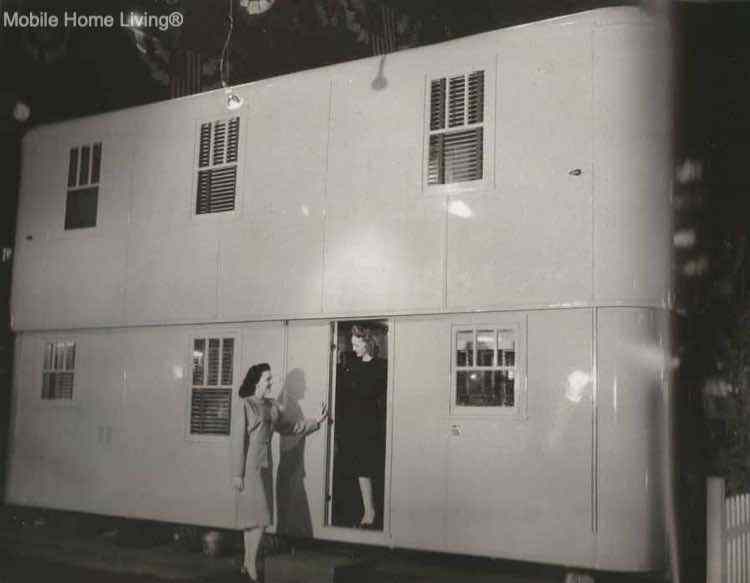
The caption for this photo in Trailer Travel: A Visual History of Mobile American reads, "1946, Liberty Trailercoaches boldly presents a larger family model that extrudes to accommodate six persons in a five-room two-story home. It was displayed at the National Trailer Coach Show in Chicago, Illinois. Lynn Walker and Billie Sellers (right) stand at the entrance. The upper story is raised and lowered by hydraulic lifts. When collapsed, it measures 11 feet high. Raised with wheels demounted., it is 15 1/2 feet high. Courtesy of USC Special Collections."
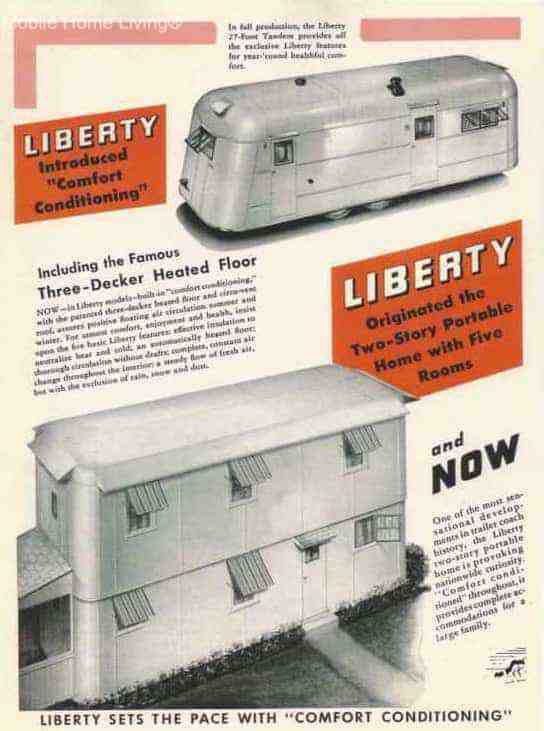

Two models of Liberty's two-story portable home, one in 1946 and one in 1947, were built. As fas as I can tell, neither were produced for the public.

1952 Executive Flagship: The World's Most Exciting Mobile Home and Office
The Pan-American division of Mid-States Corporation built the Executive Flagship, the world's most complete and exciting mobile home and office. They dubbed it the world's most exciting mobile home and office and they weren't lying.
Mid-States was a large trailer manufacturer so this one-of-a-kind mobile home was a perfect rolling advertisement for the company.
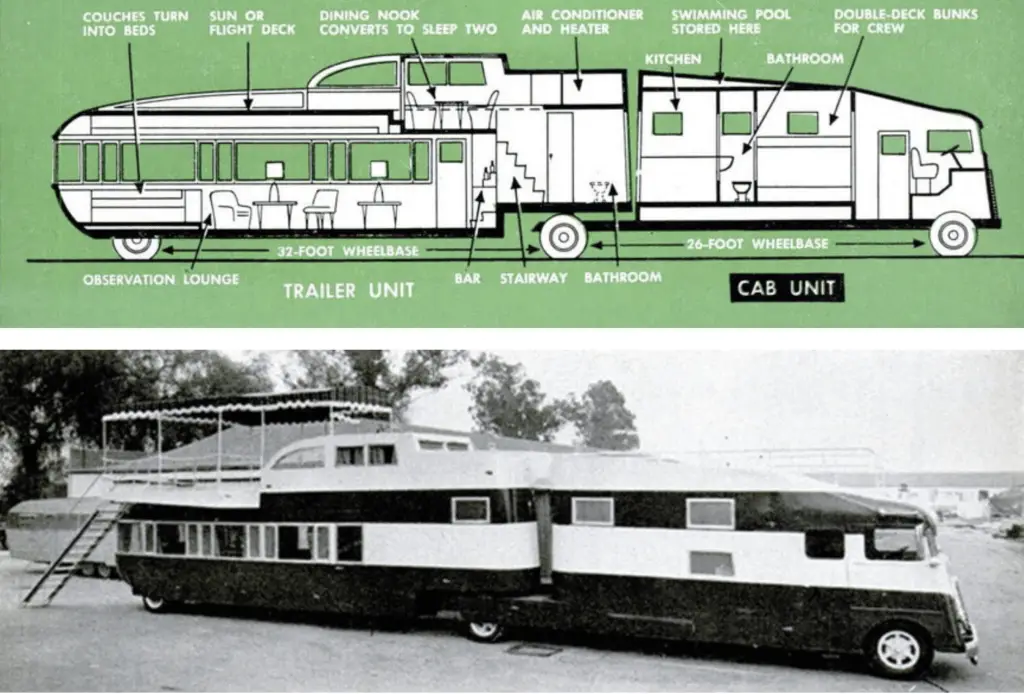
The company president, William B. MacDonald, designed the 65-foot long, self-powered articulating mobile home. It weighed in at 18 tons and rolled along on 10 wheels.
The Executive Flagship had everything!

The mobile home and office was a double unit. The motor home had a 26-foot wheelbase and held important things like the kitchen and bathroom. The back section, or actual mobile home, was similar to an articulated 5th wheel and had all the fun stuff: an observation lounge, a sun deck that could withstand a helicopter landing, a portable six-foot-deep inflatable swimming pool with a diving board, an extendable sundeck, air-conditioned dining nook and bar. It was the ultimate party (and work) mobile.
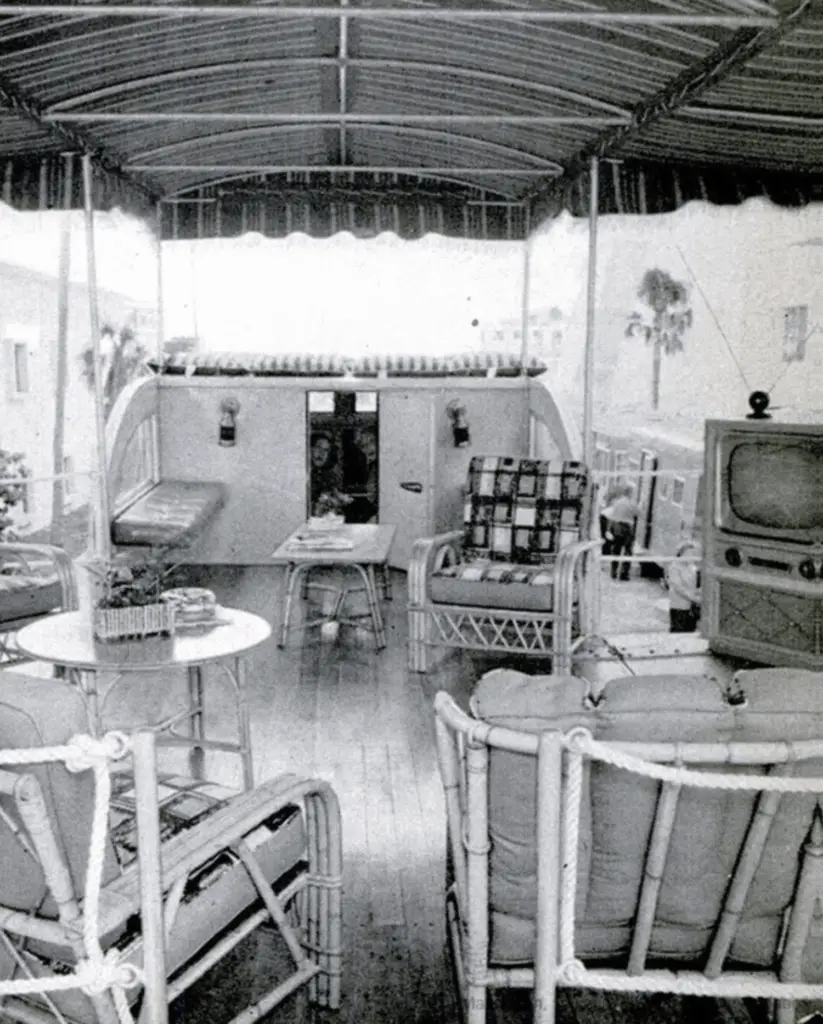
Unique Vintage Mobile Homes that Expanded
We can't discuss unique vintage mobile homes without talking about expanding mobile homes. They were pretty awesome in thought but were a bit before their time.
1953 Budger Expando
Budger Manufacturing Co was one of the first companies to offer an expanding mobile home to the general public.
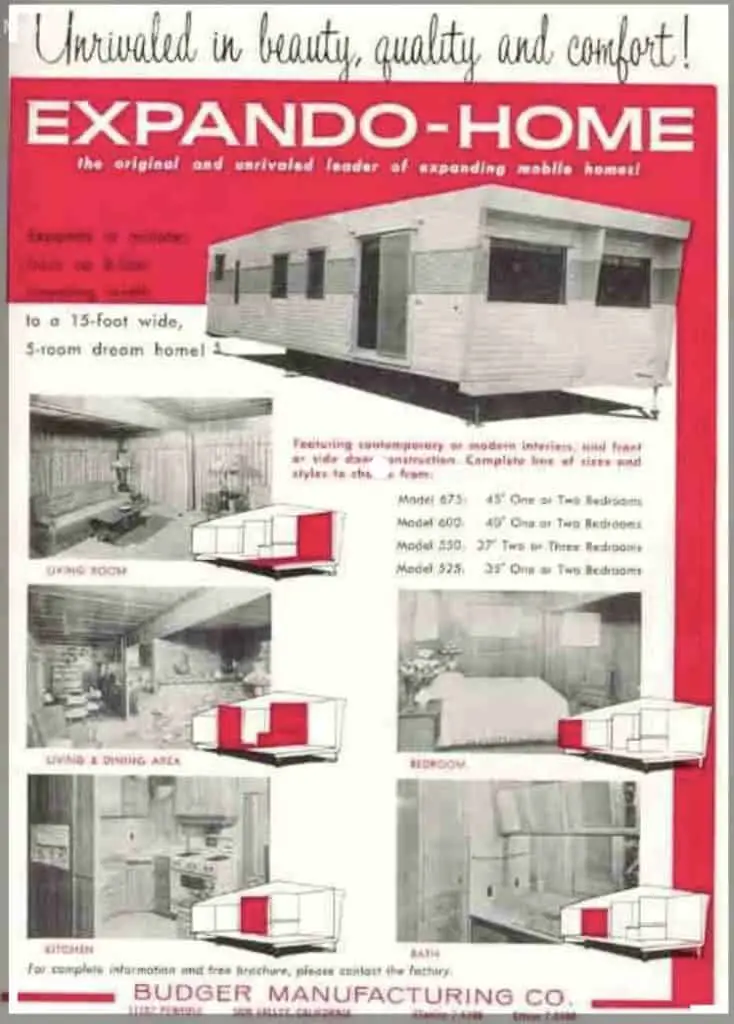
Budger Manufacturing Company Inc. had a fairly popular line of expanding homes they deemed the 'Expando Home.' It was a 7.5 wide single wide that would expand into a 15′ wide double wide.
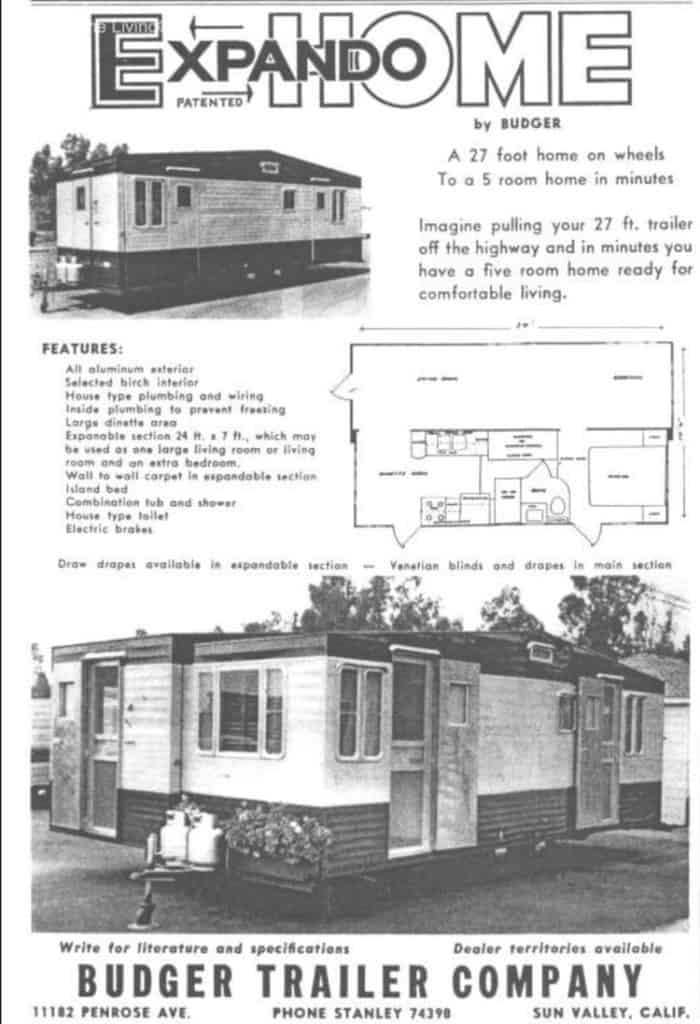
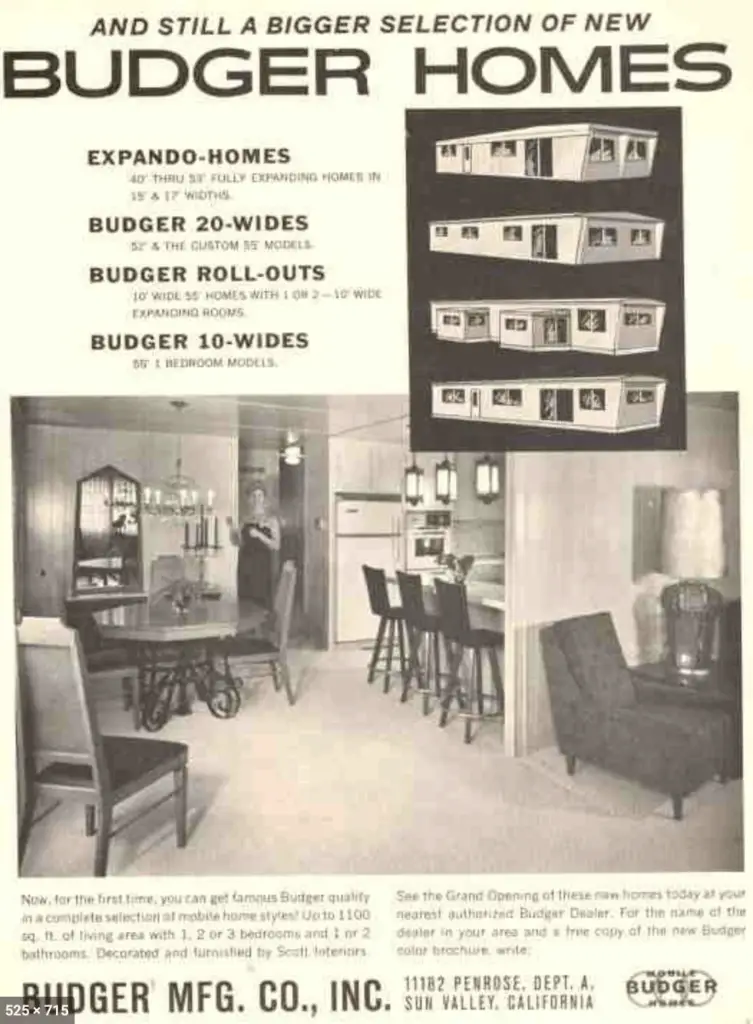
1947 Elcar SunCar
The Elcar SunCar was another unique vintage mobile home produced by Mid-States Corporation. Expandables were huge though they had their issues. Leaks were common and hydraulics would go out and it wasn't easy to repair them due to their location.
The Elcar had a rear screened porch that folded in for transport. The sidewall windows had their own awning with porthole designs. The circle porthole design was carried through on the sun deck too.


1954 Prairie Schooner
The Prairie Schooner took a page out of the Elcar SunCar book. The mobile home had a front entry with awning. This layout has been popular on the west coast since the Prairie Schooner but not so much on the east coast. However, we are seeing more of the front entrances.
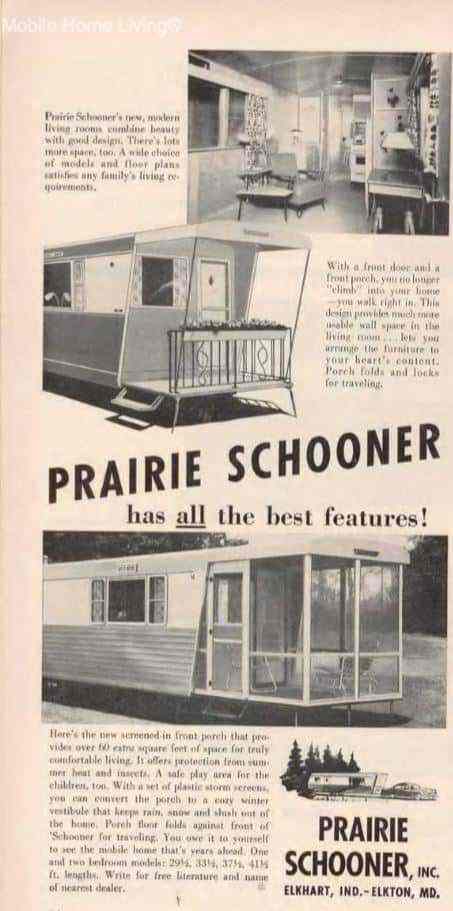
1954..was the start of the trailer becoming a real competition to conventional housing.
– Art Griffin, Through a Looking Glass
Spartan
Spartans were unique because of their aluminum framing and siding along with their art deco styled design features. The company was a perfect example of American ingenuity and innovation. My heart swells just thinking about them!
I've added Spartan Trailers to my list of unique vintage mobile homes because of their luxury, design, and their All-American roots. You can read more about how the Spartan Trailer Company started here.
The Spartan Trailer was born in a closed aircraft factory. The company had been building fine aluminum airplanes for the US government but was unneeded after the war ended. They had a full factory, lots of material left, and a work crew that needed to keep their jobs so they went on a mission to keep the plant open.
One of their VPs visited a camper factory in Detroit and figured out they could build travel trailers using the material they had and without retooling the factory. It really is American ingenuity at its finest!
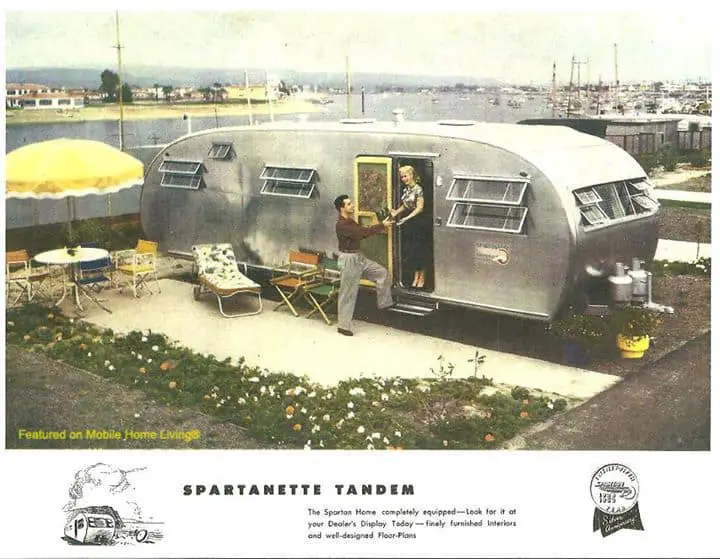
Spartan built top of the line luxury homes with some beautifully unique features like the carousel kitchen, later copied by many other builders.
The trailer is a hybrid of the aeroplane, automobile and house in construction and engineering.
Trailer Topics, 1940 via Trailer Travel: A Visual History of Mobile America,
Balcony Kitchen / Sunken Living Rooms
I'm adding the balcony kitchen and sunken living rooms because it was such a unique innovation. Several builders played around with the concept but Homette did it most/best.
With sidewalls pretty much limited to 7 foot due to drag during transport, there was only so many things builders could do. The butterfly roof and what some manufacturers called the telescopic roof was one concept but the sunken room seemed to make more sense though transport and HVAC became a little tricky as far as I can tell.
My 1978 Homette single wide has a front balcony kitchen and I loved it the second I saw it. It's still one of my favorite things about it.
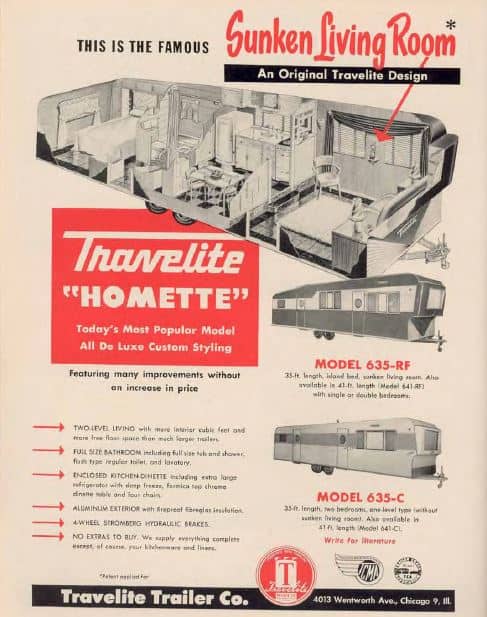
Two-Story Mobile Homes
Of course, we can't have a list of unique vintage mobile homes without adding two-story mobile homes. They were so cool!
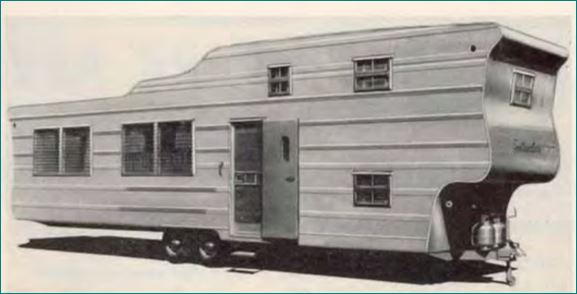
There were 3 different two-story mobile homes shown at the 1954 LA Trailer Show.
The Southwestern (above) was a big hit featuring a master island bedroom and a balcony bunk arrangement. . It was built by Southwestern Mobile Homes out of Grand Saline, TX.
The two-story Southwestern rolled in at 12.5 inches tall and 35′ long. It was built in a way that you could stand up in all bedrooms, something other 2-story mobile homes had trouble achieving.
Demand was so great that the company would only allow dealers that carried all their models to sell the Southwestern 35′. (Source: Trailer Travel Magazine, June 1955 Issue)

Pacemaker, Magnolia, and several other manufacturers built their own two-story mobile homes.
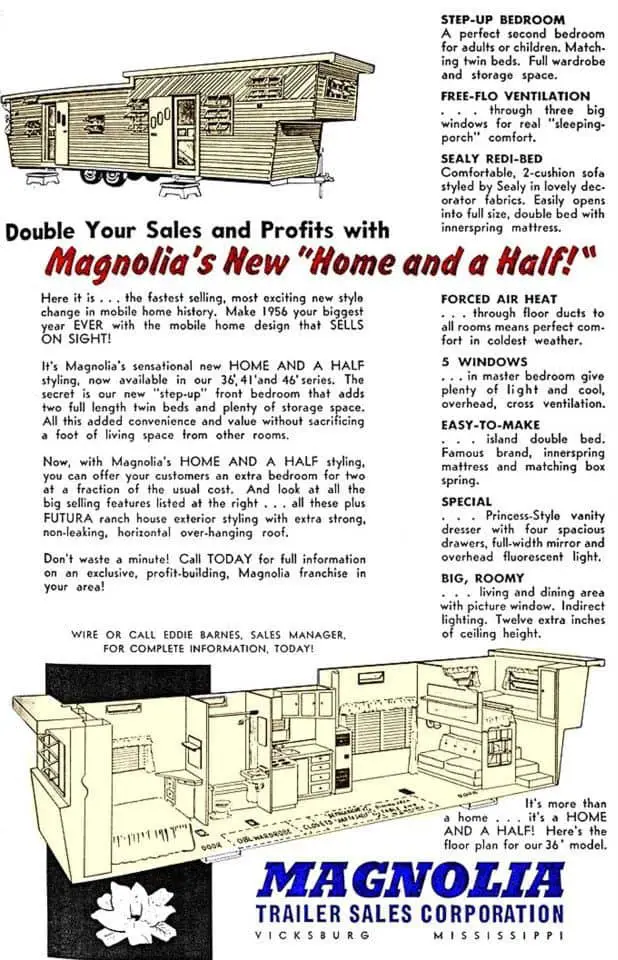
You can see the interior of a Stewart Bi-Level Mobile Home here.
Summary: Unique Vintage Mobile Homes
I can't end this article about unique vintage mobile homes without mentioning the 10-wide. In every book, thesis, and magazine I've ever read about vintage mobile homes they all stress the importance of the Marshfield 10-wide. Before it came along, builders could only build 8-foot wide homes because it was illegal to transport anything wider on US highways. Elmer Frey, the president of Marshfield Homes, pushed to have that ban lifted and those 2 extra feet completely changed mobile homes.
Two measly feet completely changed mobile homes. The mobile home hallway was born and mobile homes went from having a camper layout, where you walked through one room to get to the next, to an actual home with privacy. It was a pivotal point for our homes and they wouldn't be what they are now had they remained 8 foot wide.
mcdowellseestrocces.blogspot.com
Source: https://mobilehomeliving.org/9-unique-vintage-mobile-homes/
0 Response to "Holiday 1969 Mobile Home"
Postar um comentário